Christmas! Is it your favorite time of year too? If you’re planning to be in Europe for Christmas time, Germany is a truly magical place to experience this incredible holiday. Everyone will be wishing you German Christmas greetings and enjoying some typically German Christmas traditions.
Why not join in the fun?! This article aims to teach you a few different ways to wish someone Merry Christmas in German or happy holidays along with going over some lovely German Christmas time traditions.
Let’s get learning!
German Christmas Traditions
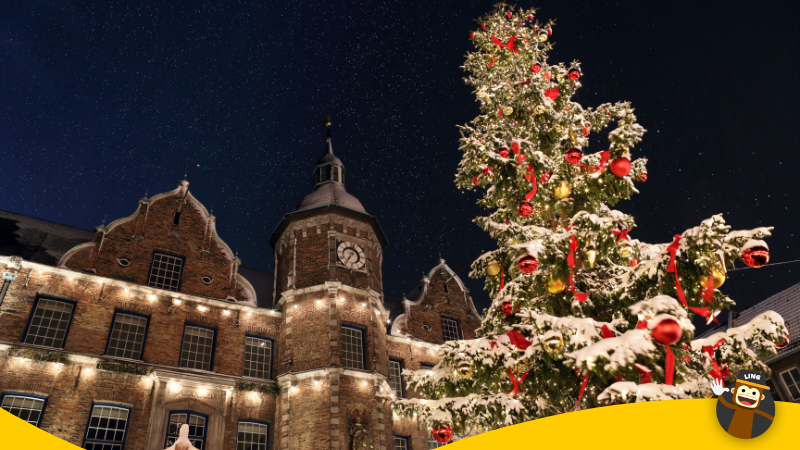
There are quite a few Christmas traditions in Germany. Many revolve around spending time with the people you love and food. Lots of food!
You can expect to see a lot of the stereotypical Christmas things such as elves, Santa Claus, Christmas trees, and wreaths, as Kris Kringle was invented here!
The first stop on a traditional German Christmas is a German Christmas market.
Christmas Markets (Weihnachtsmärkte Or Christkindlesmarkt)
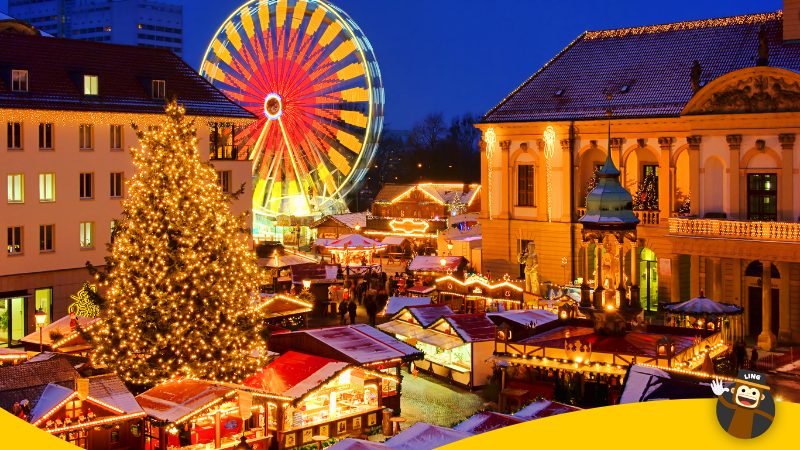
You simply can’t be in Germany during December and not visit a Christmas market. Christmas markets are a time-honored tradition in Germany, and the biggest and the best one is located in Nuremburg.
A German Christmas market is the perfect place to get souvenirs and stuff your face with yummy drinks and delights. Head to the market center (Hauptmarkt) where you’ll find the following delicious German holiday food and drink:
- drei im Weckla (three roasted Nuremberg-style bratwursts in a bun)
- Lebkuchen (similar to gingerbread)
- Glühwein (mulled wine)
- Glögg (another type of mulled wine)
- Eierpunsch (eggnog)
Besides the shopping and the food, the best thing about German Christmas markets is an incredible atmosphere. If you’re lucky and there’s fresh snow, you’ll feel as if you’re in a winter wonderland!
Pro tip: visit the Christkindlesmarkt in the early evening to watch the sunset and witness the lights turn on and experience the magic!
St. Nicholas Day (Der Nikolaustag)
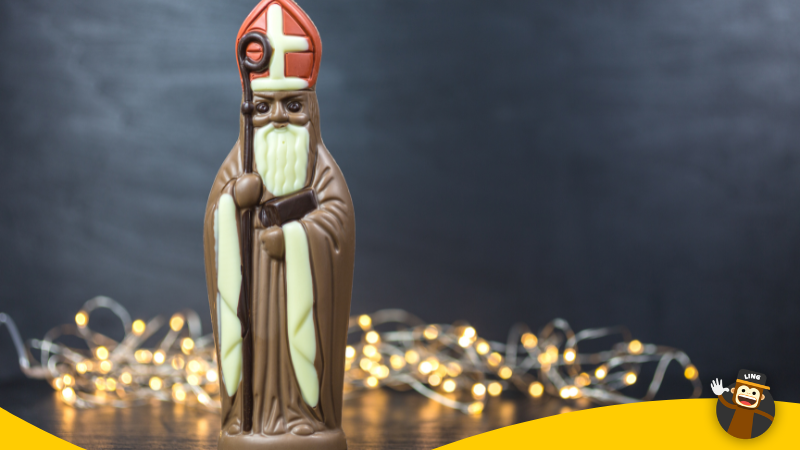
Each year on the 5th of December, it’s tradition for German children (and some adults too!) to polish their best boots or shoes and leave them out for St Nicholas (St. Nikolaus). It’s sort of like a prelude to the are you on the naughty or nice list because if you’ve been good, the boot or shoe will be filled with sweets and treats the next morning. On the other hand, a piece of wood will be found!
Advent Calendars (Adventskalender)
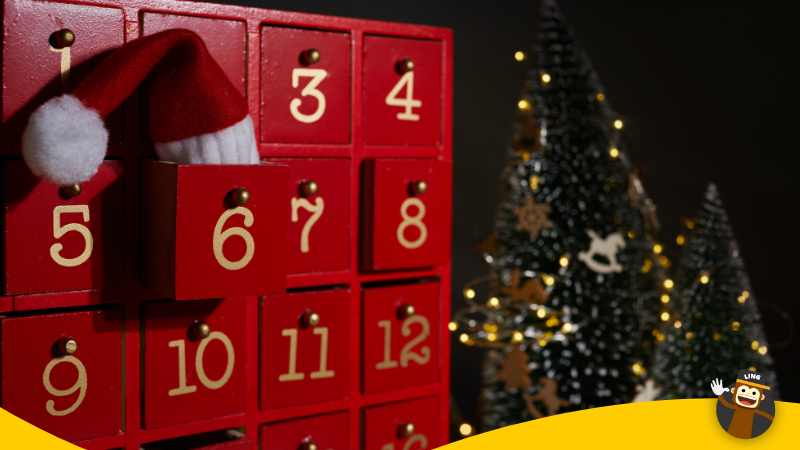
All Advent traditions are meant to reflect a religious celebration of the arrival (advent) of the Christ Child (das Christkind) also known as Jesus Christ. It is believed his official birthday is on what we traditionally refer to as Christmas, the 25th of December.
The Advent calendar has 24 ‘doors’ for the days of December 1st to the 24th. Behind each door is a treat or a Christmas ornament. One door is opened each day with the biggest door being for Heiligabend or Christmas Eve. Usually, there is a bigger surprise behind this door and a nativity scene (Weihnachtskrippe).
The Advent Wreath (Adventskranz)
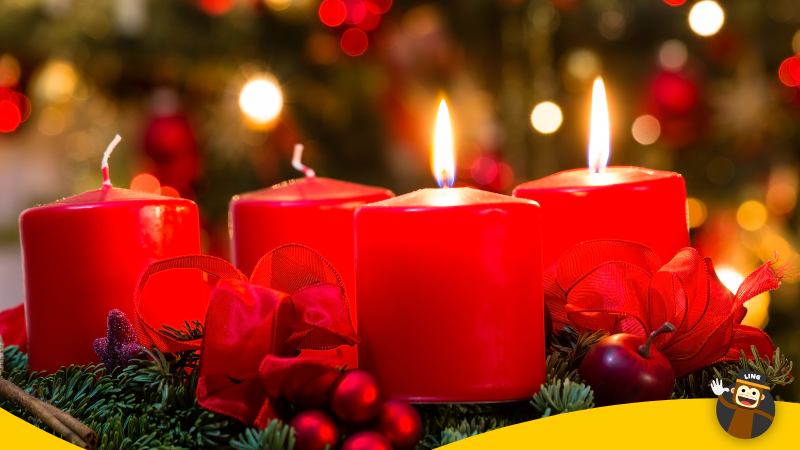
Advent wreaths (Adventskranz) are not placed on front doors as they would be in the US or Canada but rather placed out on a table on the first Advent Sunday. A traditional Advent wreath has four candles with each one representative of the Advent Sundays leading up to Christmas Eve.
It’s a tradition for families to light the Advent candle and sings Christmas carols together each Sunday.
Christmas Eve (Heiligabend) In Germany
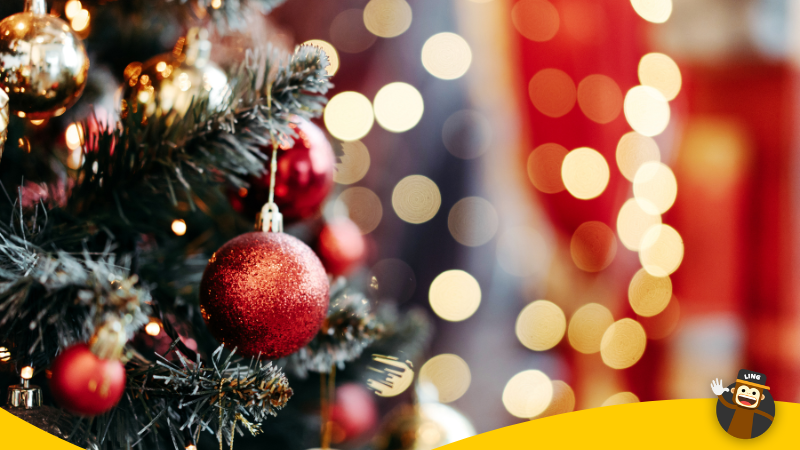
Unlike some western cultures, In Germany, the putting up of the Christmas tree (der Weihnachtsbaum / der Tannenbaum) is reserved for December 23rd or 24th. Although apparently children aren’t invited to partake in the decoration of the tree. Christmas trees in Germany are decorated with:
- baubles (die Christbaumkugeln or Kugeln)
- fairy lights (die Lichterketten)
- candles (die Christbaumkerzen)
- tinsel (das Lametta)
Once the Christmas tree is decorated, presents are placed under the tree and a bell is rung to let the children know they can come running in to see.
Presents are actually opened on Christmas Eve, not Christmas Day and after these festivities are finished many families will attend midnight mass at church.
Santa Claus In Germany
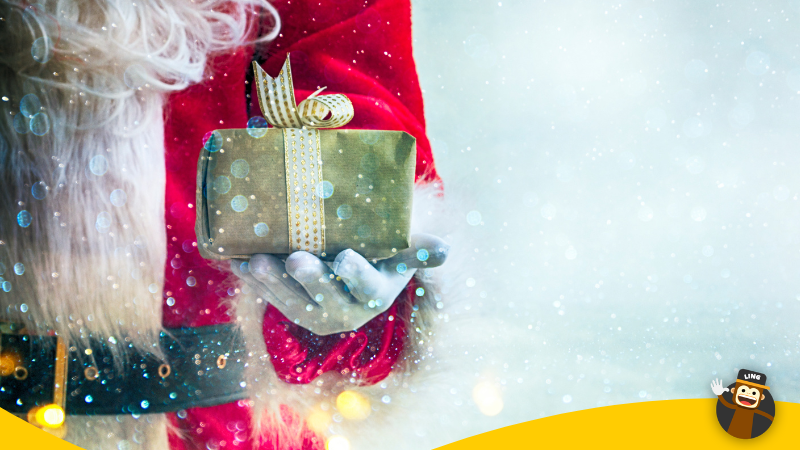
There isn’t exactly Santa Claus in Germany, but there are actually two gift-bearers children wish for. One is called Christkind which is sort of like an angel. They’re also called Christkindl and are the traditional Christmas gift-bringer in Germany.
The other is called Weihnachtsmann. Think of an angel-like Santa but with blonde hair. He delivers gifts on Christmas Eve, and there is no notion that he goes down anyone’s chimney. He is Germany’s version of Santa Claus.
Others still celebrate and believe in St. Nikolaus, who was actually a real person and a Greek saint.
Christmas Day In Germany
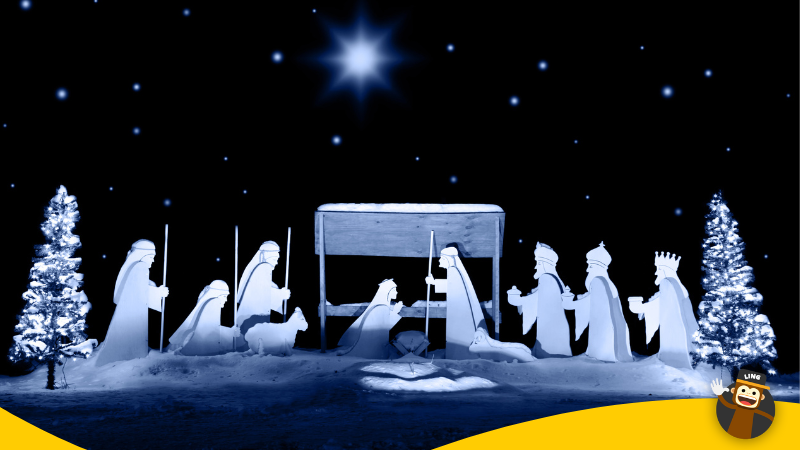
Christmas Day (Erster Feiertag) is a day when families will spend the day with each other usually having a big meal.
The following day, December 26th (Zweiter Feiertag) is also a national holiday and is sort of similar to Boxing Day in the UK.
German Christmas Greetings
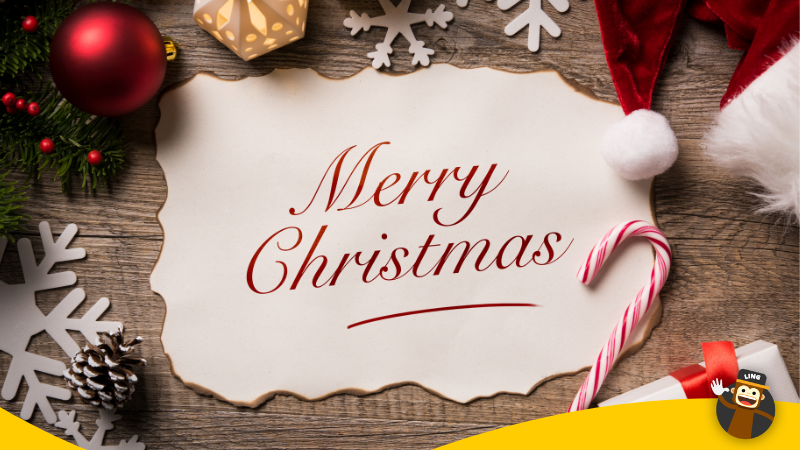
All right we’re here at the part you’ve been waiting for! How do you wish someone a Merry Christmas in German?
Extra German Words Related To Christmas
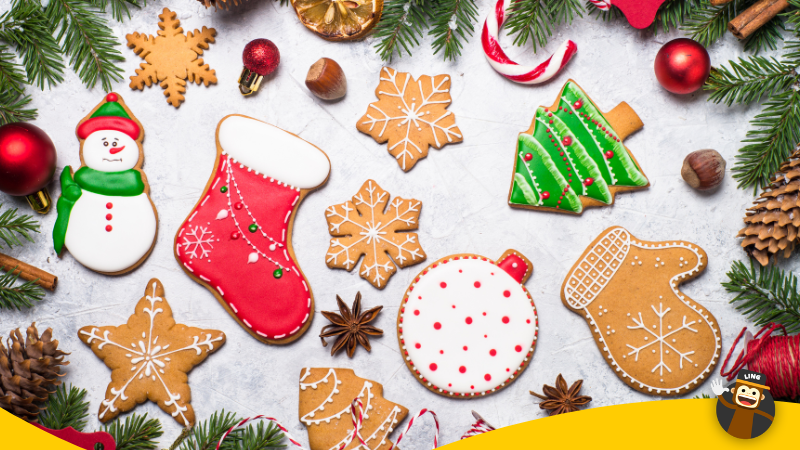
If you’re celebrating Christmas with German friends or family you may want to also know some other Christmas-related vocabulary to help you during the Christmas season.
Christmas Vocabulary For Kids
These are Christmas words commonly associated with children.
Ready To Spend Christmas In Germany?
If you’ve been invited to someone’s home during the holiday season, you’ll want to know how to thank them.
Also, with New Year just around the corner, how will you wish someone a Happy New Year?!
Learn More German With Ling App
Ling App can help you increase your level of German to advanced in just 10 to 15 minutes a day. You’ll always have language guidance and lessons right on your phone for easy access.
We’ll teach you vocabulary that you will use in daily life to help you to feel confident in Germany or any German-speaking country.
Plus, you’ll love the fun lessons Ling App has for you!






























































